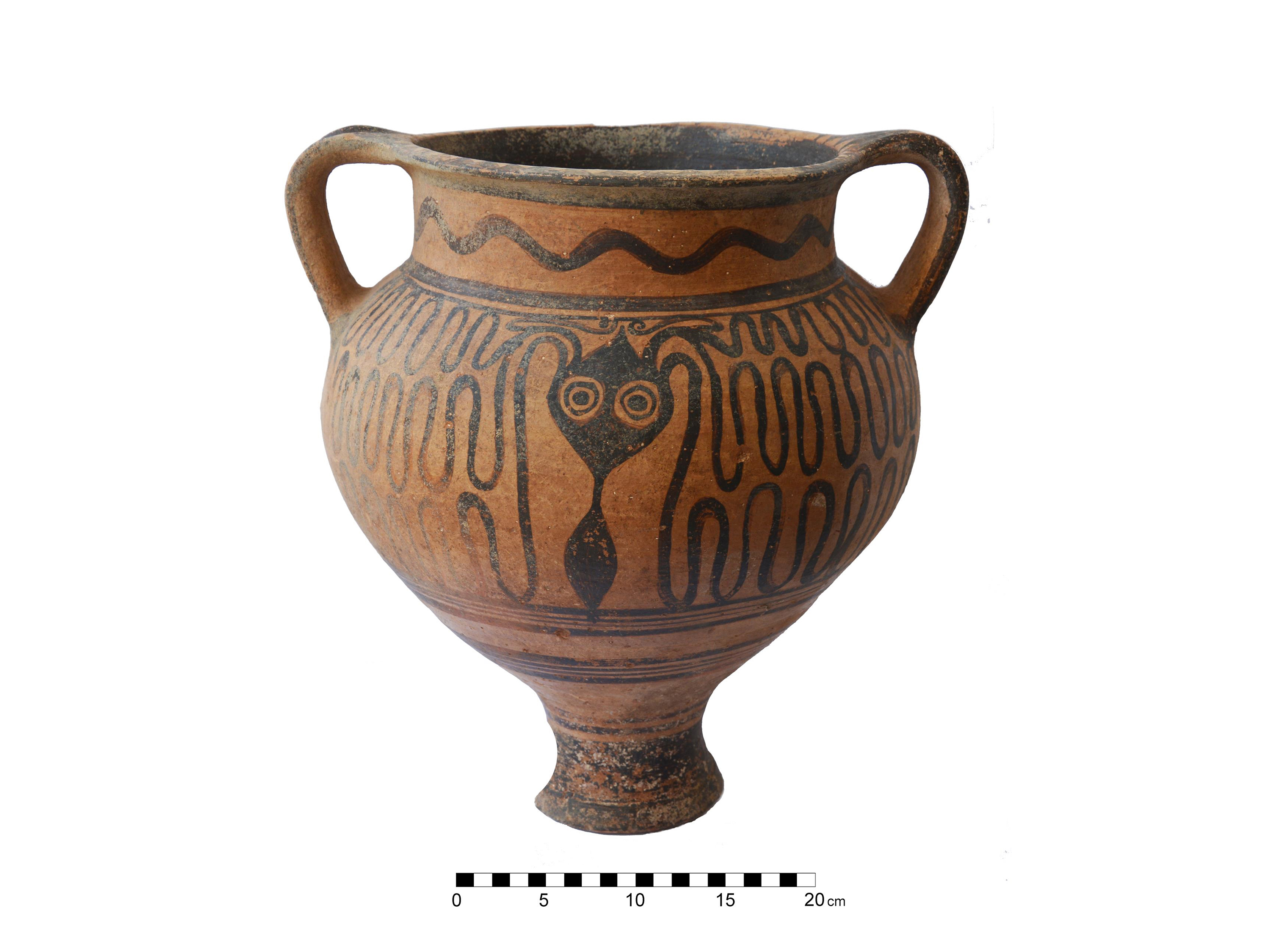Excavations near Hala Sultan Tekke have unearthed tombs containing an array of impressive burial items, including locally produced pottery, ornaments and imported jewellery, according to the antiquities department.
It announced on Friday the completion of the 2023 excavations at Dromolaxia-Vyzakia by an international team, headed by Professor Peter M. Fischer from the University of Gothenburg.
The site at Dromolaxia-Vyzakia was a Late Bronze Age harbour settlement, of at least 25 hectares in size. The settlement, which flourished from c. 1630 to 1150 B.C., lies along the shores of the Larnaka salt lake near the Hala Sultan Tekke mosque.
Guided by previous geophysical surveys, excavations concentrated on Area A, which is the ancient city’s cemetery.
Three chamber tombs, preliminarily dated to the 14th century BC, were revealed. One had been looted, most likely in the 19th century AD. Although the 19th century looters destroyed many objects and human remains, several items and scattered human bones were identified, carefully excavated, and conserved. These items comprise jewellery and imported pottery (mainly shards) from the Mycenaean sphere of culture but also from Egypt and Anatolia.
Two nearby tombs were undisturbed, apart from the collapse of their chambers. The tombs contained an array of impressive grave burial items, including locally produced pottery and ornaments, as well as numerous items of jewelry and other imported objects from the Aegean, Anatolia, Egypt, the Levant and cultures further east and north.
There were, for instance, several items of amber, most likely from the Baltic Sea, of deep blue lapis lazuli from Afghanistan and of dark red carnelian from India. Other objects include sophisticated jewelry of precious metals, including diadems, and daggers, knives, spearheads and a bronze mirror. Several items of ivory and faience are imports from Egypt during the famous 18th Dynasty, the time of the well-known Pharaohs Thutmose III, Eknaton and his wife Nefertiti.
According to the antiquities department, the study of the skeletal remains is ongoing and the estimation of the number of individuals, their gender, age-at-death, indications of disease and trauma await further investigation. Newborns, infants, and adults were found with numerous burial items.
The city’s wealth, it notes, seems to have been based on the production of copper and trade with near and distant cultures while judging by the rich burial gifts, the tombs belonged to families of the city’s ruling class who took part in the export of copper and intercultural trade.







Click here to change your cookie preferences